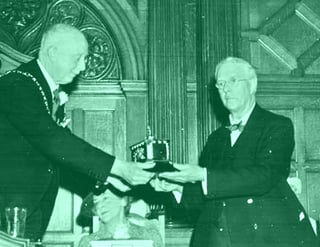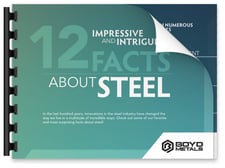If you are working on a project that requires tough, stable and/or hygienic metal, you’re probably already looking toward stainless steel. Stainless steel is a term that covers a wide array of products, each of which serve different purposes. As a general rule of thumb, an alloy has to be made of at least 10.5% chromium to be classified as stainless steel. The other elements that are combined with chromium will alter its strength and durability.

Brief history lesson…In 1913, English researcher Harry Brearley developed a steel that contained 12.8% chromium and .24% carbon, which is believed by many to be first stainless steel ever created (as with most invention stories, this one is also heavily contested.) Though Brearley’s research was for the purpose of developing a metal that could extend the lifespan of gun barrels, he quickly saw the potential for a rust-resistant metal in the kitchen. In pairing with a local cutler, Ernest Stuart, the hardening process for creating stainless knives was developed - and the term “stainless steel” was coined.
In terms of use, stainless is exceedingly versatile. It can be cut and welded, formed and machined, and comes in a wide variety of grades for a wide variety of applications. Below, we look at four of the many applications for which stainless steel is a frontrunner!
1. Food production and preparation
Presently a majority of cutlery in the US is made using stainless steel. The production options have expanded immensely since the early 1900s, allowing for a greater variety of manufacturing methods. However, the role of stainless in the kitchen isn’t relegated to knives and forks. The same benefits of non-porous corrosion and water resistance make it an ideal material for food production, cookware, countertops, and food storage solutions. It is easy to sanitize, quick to dry, and doesn’t store or pass odors on to the foods with which it comes in contact. 316 grade stainless, particularly, is strong enough to hold up under anti-bacteriological cleaning systems, which prevent the growth of bacteria and viruses.
2. Architecture
Our guide, 12 Impressive and Intriguing Facts About Steel highlights the uses of stainless steel in some of the most iconic structures in the US. Stainless has proven to be a practical choice for use in most public structures due to its longevity, but its wide range of finishes also provide extreme flexibility in design. Two examples of this varying aesthetic include the International Gem Tower in New York, which features 7J stainless in a unique light-refracting geometric pattern; and the textured 304L stainless used in the Unisphere monument, originally constructed for the 1965 New York World’s Fair.

3. Medical Manufacturing
As one of the earliest applications of stainless steel was the development of high-quality cutting instruments, it should be no shock that the progression to medical instrumentation was almost immediate. By 1926, however, a specialized type of stainless was developed in Germany specifically for the fabrication of surgical implants. This austenitic steel contained 18% chromium and 8% nickel, and in modern categorization would be considered type 302. The success of this development established a solid foundation that led to the addition of the chemical element molybdenum - the development of 316 grade. To this day, 316 stainless steel is used in instances where pitting corrosion is of particular concern. The rigorous hygienic demands for a diverse range of medical applications, including medical instruments, implants and medical furniture make stainless the best choice for medical manufacturing.
4. Automotive
In case you hadn’t gotten this take away yet, stainless steel is tough. The final application we will discuss is in the automotive industry. In addition to its other benefits, stainless steel retains good mechanical properties even at high temperatures. Contemporary (non-Delorean) passenger vehicles contain approximately 40 or so pounds of stainless, primarily in the form of exhaust system components. High resistance to oxidation and the ability to resist distortion over long exposures to high temperatures establish stainless a prime candidate for use in exhaust manifolds and catalytic converters. The other side of the exhaust system needs to be able to withstand exposure to standard road hazards, the most detrimental of which are moisture and road salt (see the section on architecture!) Stainless developers are conducting research into the use of stainless as a structural element in cars, specifically AISI 301L, which has a high tensile strength and can be used in light gauges. This metal is currently a preferred material in the fabrication of railway carriages.
These are only a few of the applications in which stainless steel shines. If you’re unsure what metal to use for your next project, feel free to give us a call. We will be happy to discuss your options with you to ensure that you’re selecting the absolute best choice for your project.
 Want to know more?
Want to know more?
Check out our free resource, 12 Impressive and Intriguing Facts About Steel!
Thanks for reading! We encourage you to subscribe to our blog for more helpful insights.



